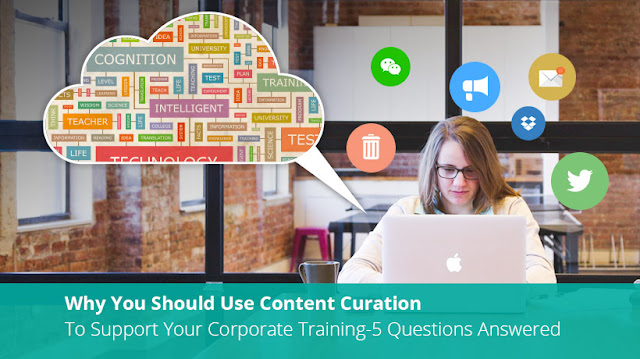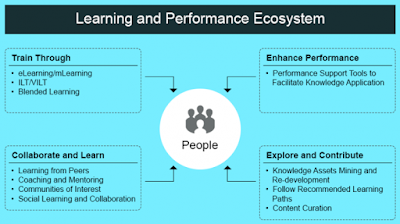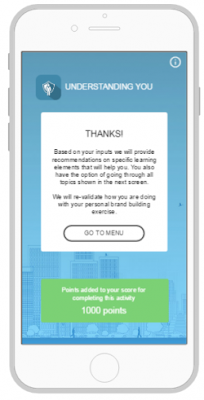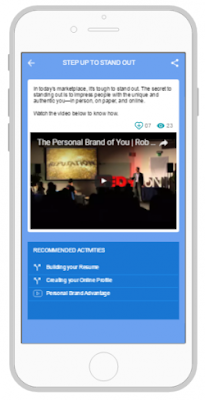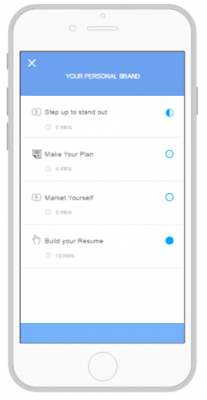This free eBook How Can You Measure The Learning Effectiveness Of eLearning Courses And Create A Positive ROI provides insights on how you can predict, evaluate, and validate the learnability or learning effectiveness of your eLearning courses and how this impacts ROI.
As the Chief Learning Strategist for EI Design, I have practical experience of architecting eLearning and mLearning solutions (including performance support) for customers globally for over 15 years. I also head our Learning Innovation Lab initiative and closely track the changing landscape of tools, technologies, learners’ expectations, and business needs.
This eBook features our unique Learnability Evaluation Framework that is a product of our Innovation Lab. It took us nearly 2 years of sustained effort to create it. The framework enables organizations to predict, measure, and validate the learnability or learning effectiveness of their eLearning courses.
I begin with the definition and significance of learnability and show you how it impacts ROI. Then I walk you through our unique Learnability Evaluation Framework.
I share two case studies that showcase how you can practically measure and validate the learnability or learning effectiveness of your eLearning courses.
I have the essence of all these pointers as three microlearning nuggets that include the summary of the salient aspects covered in this eBook.
Through a series of questions and answers, this eBook How Can You Measure The Learning Effectiveness Of eLearning Courses And Create A Positive ROI addresses the typical questions you may have on how can you measure and step up the Learnability index of your eLearning courses and how can this be seen in your ROI.
The eBook addresses questions like:
Additionally, through two case studies, I showcase how Can You Measure and enhance the learnability of eLearning courses as well as validate the same with your learners.
About The eBook
The eBook is organized as:
Section 1: Learnability Basics
This section covers the definition of learnability and what is its significance.
Section 2: Learnability And Its Impact On ROI
This section covers two important aspects: First being why measuring learnability or learning effectiveness of eLearning courses is vital for Learning and Development teams. After this, it outlines how this impacts the ROI.
Section 3: Learnability Measurement
This section outlines the intrinsic challenges in measurement of learnability and introduces our unique learnability Evaluation Framework that you can use to predict, evaluate, and validate the learnability of your eLearning courses (both new as well as legacy). It also highlights what value this will bring to the Learning and Development teams.
Section 4: Case Studies And Videos
This section features 2 case studies:
Video Links: I have also included three video links (microlearning nuggets) that summarize these aspects.
Do download this free eBook How Can You Measure The Learning Effectiveness Of eLearning Courses And Create A Positive ROI for insights on how you can enhance employee performance by measuring and uplifting the learnability or learning effectiveness of your eLearning courses. If you have any specific queries or would like to see how you can use our framework in your organization, do contact me at apandey@eidesign.net.
How Can You Measure The Learning Effectiveness Of eLearning Courses And Create A Positive ROI
This free eBook How Can You Measure The Learning Effectiveness Of eLearning Courses And Create A Positive ROI is designed to help organizations that are on the lookout for measures to enhance employee performance and see an improvement in the ROI.As the Chief Learning Strategist for EI Design, I have practical experience of architecting eLearning and mLearning solutions (including performance support) for customers globally for over 15 years. I also head our Learning Innovation Lab initiative and closely track the changing landscape of tools, technologies, learners’ expectations, and business needs.
This eBook features our unique Learnability Evaluation Framework that is a product of our Innovation Lab. It took us nearly 2 years of sustained effort to create it. The framework enables organizations to predict, measure, and validate the learnability or learning effectiveness of their eLearning courses.
I begin with the definition and significance of learnability and show you how it impacts ROI. Then I walk you through our unique Learnability Evaluation Framework.
I share two case studies that showcase how you can practically measure and validate the learnability or learning effectiveness of your eLearning courses.
I have the essence of all these pointers as three microlearning nuggets that include the summary of the salient aspects covered in this eBook.
What You Can Expect From The eBook
Through a series of questions and answers, this eBook How Can You Measure The Learning Effectiveness Of eLearning Courses And Create A Positive ROI addresses the typical questions you may have on how can you measure and step up the Learnability index of your eLearning courses and how can this be seen in your ROI.The eBook addresses questions like:
- What is learnability or learning effectiveness of eLearning courses?
- What is the significance of learnability or learning effectiveness of eLearning courses?
- Why is measuring learnability or learning effectiveness of eLearning courses vital for Learning and Development teams?
- Does learnability impact the computation of ROI on training? Is this impact direct or indirect?
- What are the challenges that Learning and Development teams face in determining learnability of their eLearning courses (legacy as well as new)?
- How do we at EI Design measure learnability?
- How can you use our framework to maximize ROI on training?
Additionally, through two case studies, I showcase how Can You Measure and enhance the learnability of eLearning courses as well as validate the same with your learners.
About The eBook
The eBook is organized as:
Section 1: Learnability Basics
This section covers the definition of learnability and what is its significance.
Section 2: Learnability And Its Impact On ROI
This section covers two important aspects: First being why measuring learnability or learning effectiveness of eLearning courses is vital for Learning and Development teams. After this, it outlines how this impacts the ROI.
Section 3: Learnability Measurement
This section outlines the intrinsic challenges in measurement of learnability and introduces our unique learnability Evaluation Framework that you can use to predict, evaluate, and validate the learnability of your eLearning courses (both new as well as legacy). It also highlights what value this will bring to the Learning and Development teams.
Section 4: Case Studies And Videos
This section features 2 case studies:
- Case study on how to measure and enhance the learnability of eLearning courses.
- Case study on how you can validate the learnability of eLearning courses.
Video Links: I have also included three video links (microlearning nuggets) that summarize these aspects.
Do download this free eBook How Can You Measure The Learning Effectiveness Of eLearning Courses And Create A Positive ROI for insights on how you can enhance employee performance by measuring and uplifting the learnability or learning effectiveness of your eLearning courses. If you have any specific queries or would like to see how you can use our framework in your organization, do contact me at apandey@eidesign.net.

